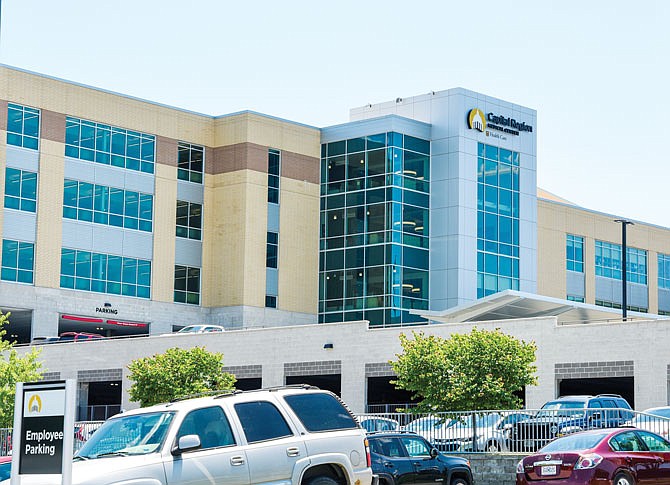The News Tribune is offering this article free to all readers because it includes information important to public safety and health in our community.
As the COVID-19 pandemic continues, questions may arise about hospitals' and nursing homes' ability to maintain adequate staffing.
Jefferson City Manor, where as of Monday 36 staff had tested positive and 35 were not working, has had 52 of its 63 nursing facility residents test positive for COVID-19.
Three of the patients who tested positive for the coronavirus have died, although their deaths may not have been attributed to the disease because of underlying health conditions.
The nursing facility is maintaining adequate staffing to serve clients through its corporate organization - JMS Senior Living, which operates multiple facilities -and through state and federal emergency management agencies, according to Craig Workman, a St. Louis-based spokesman.
He noted at least 10 days must pass after a positive test before an employee showing no symptoms may return to work.
"We are monitoring the condition of each employee during their quarantine and will make a decision on each individual employee accordingly," he said.
The state has some assistance available for health care facilities that need it.
The Missouri Disaster Assistance Team, also known as MO DMAT-1, has, when needed, deployed medical professionals to numerous hospitals and nursing facilities throughout the state, according to Mike O'Connell, Missouri Department of Public Safety spokesman. The organization stays on scene for up to two weeks. Afterward, the facility can request a continuation of services.
The state has hired hundreds of nurses, emergency medical technicians or doctors to step in for about two weeks and provide those services as needed, O'Connell said.
MO DMAT-1 deployed to Jefferson City Manor on Aug. 17.
"They help out in instances like this," O'Connell said.
The emergency medical team has had as many as six personnel at the nursing home. On Sunday, it had four there, according to O'Connell.
Some hospitals in Missouri COVID-19 "hotspots" face staffing challenges because of the pandemic. Some have had physician and nurse shortages.
Staffing at Capital Region Medical Center in Jefferson is adequate, according to Lindsay Huhman, the hospital's director of marketing. But, should it become inadequate, the hospital has plans to ensure it can continue to provide high-quality care to patients, she said.
St. Mary's Hospital in Jefferson City has been fortunate in that it has not had shortages, according to Jessica Royston, marketing and communications manager for SSM Health Mid-Missouri Region.
"SSM Health St. Mary's Hospital is appropriately staffed to provide exceptional care to our patients and this community," Royston said. "Safety is our top priority, and we remain vigilant in screening and monitoring our staff and visitors to the hospital."
Every hospital tackles its own challenges resulting from COVID-19 cases within their staffing, according to Dave Dillon, Missouri Hospital Association vice president of public and media relations.
"Some hospitals are experiencing shortages of nurses," Dillon said. "That is a very large category of the hospital workforce."
The shortage is driven by multiple factors, Dillon continued, but COVID-19 is the "primary driver."
There are health care workers who are working directly with patients or testing potential patients. If they test positive, they may be quarantined for several days and be required to show negative tests, he said.
There are also health care workers who have to remain home with children because they may not be in schools.
And workers involved in testing and conducting the lab work are even harder to find, Dillon said.
"This is a pretty important part of our workforce right now," he said. "Virtually everything hinges on COVID right now. The primary question for delivery of care is, 'Do you have the nurses to provide proper staffing?'"
Hospitals have managed through that challenge as they've "reopened" and begun providing elective procedures and conducting continuing care, he said.
"What we're hearing, although it's entirely anecdotal, is that staffing for certain positions is very much in flux," Dillon said.
Some hospitals have turned to traveling nurses, although that can be very expensive. Other hospitals have too much staff.
"It's going in both directions - we may have an abundance because of reduced utilization, or we may have a shortage," Dillon said. "If you've seen one hospital, you've seen one hospital, because all of the challenges are based upon the communities they are serving."
Hospitals have high turnover when they aren't in the middle of a pandemic, he said. It's likely worse during a pandemic.
The MHA is working on guidance for what hospitals can do if they experience staff shortages, Dillon said.

